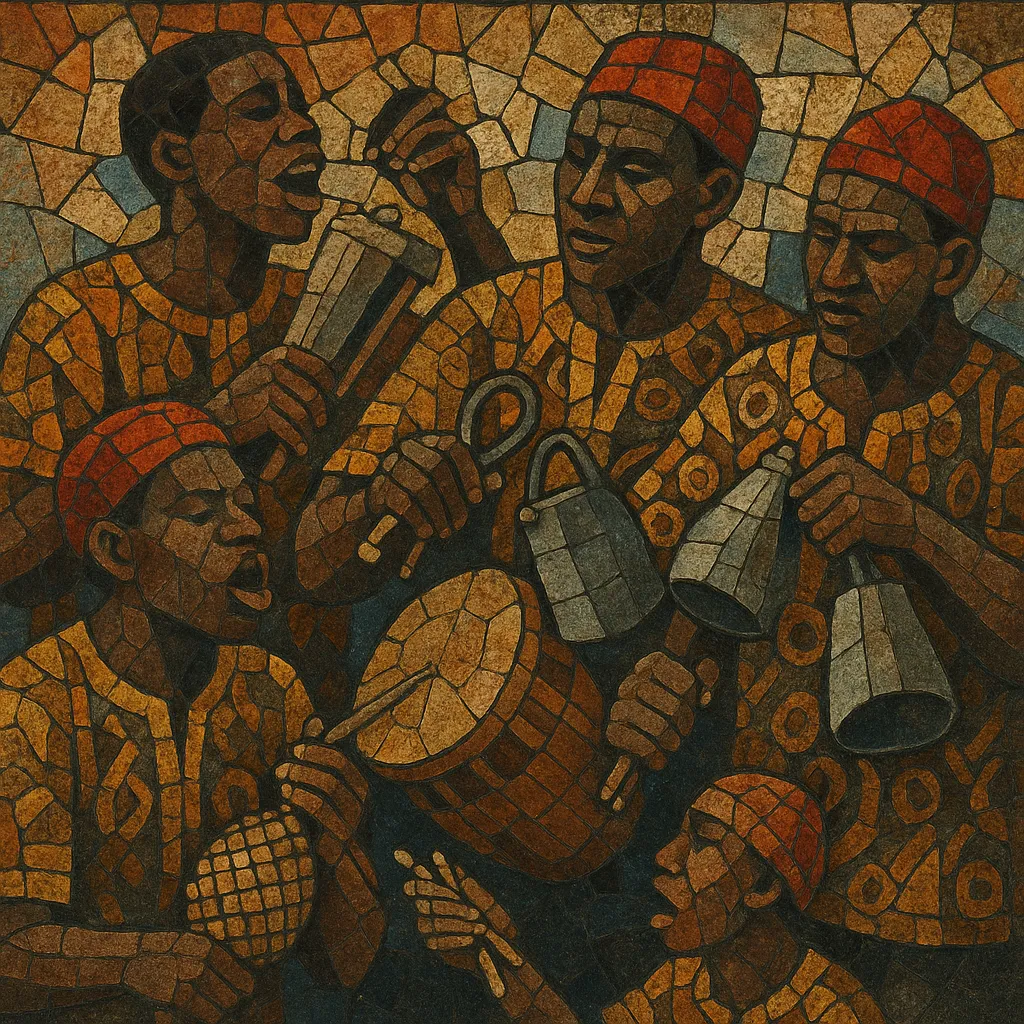Ogene music is a traditional ensemble style of the Igbo people of southeastern Nigeria built around the ogene, a large forged iron bell that serves as the timekeeper and lead voice. The ensemble typically combines multiple ogene bells with slit drums (ekwe), clay pot drums (udu), wooden clappers (okpokolo), shakers (ichaka), and vigorous call-and-response singing.
The music is communal, dance-driven, and text-centered: songs deliver praise, proverbs, social commentary, and announcements in the Igbo language, while interlocking bell patterns and polyrhythms create a propulsive groove for festivals, rites of passage, and market-day celebrations. In contemporary contexts, ogene troupes also collaborate with highlife, Afropop, and hip hop artists, carrying its village-square energy into modern recordings and stages.
Ogene music arises from Igbo community life, where metal bell orchestras have long provided rhythm, messaging, and ceremony. The ogene (iron bell) projects loudly across open spaces, coordinating dance, signaling events, and leading songs built on call-and-response. Before widespread recording, ogene ensembles were primarily functional: animating festivals, age-grade meetings, title-taking ceremonies, wrestling matches, and funerals.
With the growth of the Nigerian recording industry in the mid-20th century, distinct regional traditions began to be documented. Ogene troupes and singers adapted their repertory for radio, vinyl, and later cassettes, keeping the core bell-driven texture while lengthening forms, codifying introductions and breaks, and emphasizing lead-vocal storytelling. In eastern Nigerian cities such as Enugu and Onitsha, ogene’s presence overlapped with the rise of Igbo highlife, informing its percussion and song topics even when guitars took center stage.
Commercial video, CD markets, and diaspora events sustained ogene through the 1990s and 2000s, while local cultural troupes professionalized for weddings and festivals. As Afropop and hip hop gained dominance, artists began sampling ogene bells and recruiting full ogene ensembles, reasserting the sound as a badge of Igbo identity within modern production.
YouTube and social platforms amplified village and city troupes alike, turning street and event performances into viral clips. Collaborations with highlife and rap artists, as well as cultural praise medleys, broadened audiences at home and in the diaspora. Today, ogene thrives both as community heritage and as a flexible ingredient in contemporary Nigerian music.


